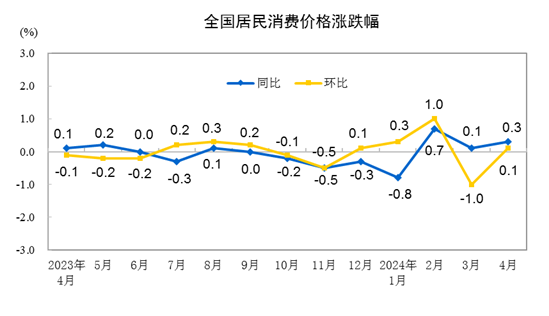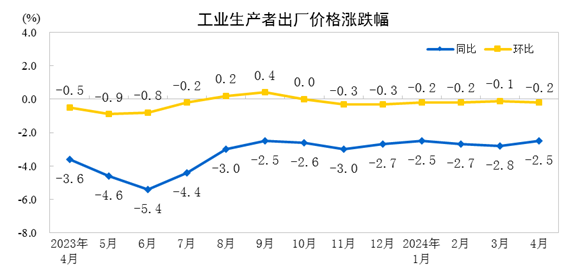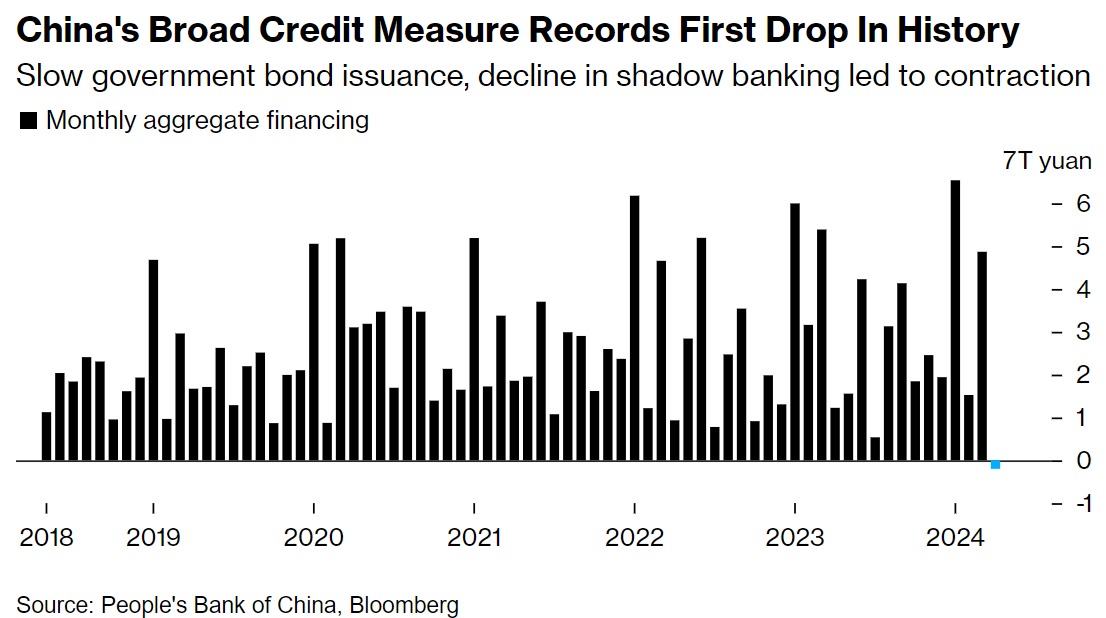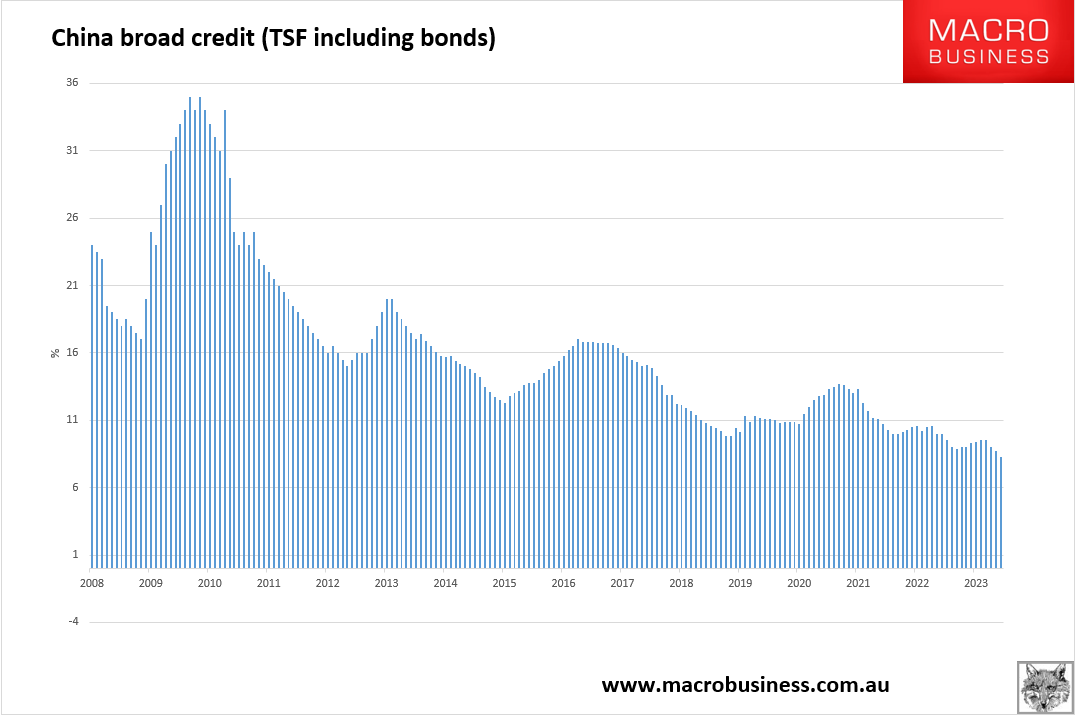Chinese deflation is forever now. From the NBS comes CPI.
In April 2024 , the national consumer price increased by 0.3% year- on -year . Among them, urban prices increased by 0.3% and rural prices increased by 0.4% ; food prices fell by 2.7% and non-food prices increased by 0.9% ; consumer goods prices remained unchanged and service prices increased by 0.8% . On average from January to April , the national consumer price increased by 0.1% compared with the same period last year .
In April , the national consumer price increased by 0.1% month-on-month . Among them, urban prices increased by 0.1% and remained the same in rural areas; food prices dropped by 1.0% and non-food prices increased by 0.3% ; consumer goods prices dropped by 0.1% and service prices increased by 0.3% .

And PPI:
In April 2024 , the national ex-factory price of industrial producers fell by 2.5% year-on-year , and the purchasing price of industrial producers fell by 3.0% year-on-year. The decline was narrowed by 0.3 and 0.5 percentage points respectively from the previous month; Decreased 0.2% and 0.3% respectively .
On average from January to April , the ex-factory price of industrial producers fell by 2.7% compared with the same period last year , and the purchasing price of industrial producers fell by 3.3% .

No end in sight.
Now, get a load of credit.
Aggregate financing, a broad measure of credit, decreased by almost 200 billion yuan ($27.7 billion) in April from the previous month, according to Bloomberg calculations of data released by the People’s Bank of China on Saturday. That’s the first time the measure has declined since comparable data began in 2017, reflecting a contraction in financing activity.
Looking back further, using a smaller data set that excludes things like government funding, it was the first decrease since October 2005, according to Bloomberg Economics.
A breakdown of the data shows that more government bonds were repaid than sold in the month, contributing to the decline. Financing from shadow banking — which refers to activities outside the formal banking system — also recorded a drop, weighing on overall credit.

Household loans—mostly mortgages—were down 516.6 billion yuan in April after rising by 940.6 billion yuan in March.
The amount of corporate loans decreased from 2.34 trillion yuan in March to 860 billion yuan.
April’s broad M2 money supply increased 7.2% over the previous year, less than the 8.3% growth predicted by a Reuters poll. March had an 8.3% increase.
Yuan loan outstanding increased 9.6% year over year in contrast to March’s 9.6% increase, which was the lowest increase ever. 9.7% growth was anticipated by analysts.
My favourite indicator of broad credit is getting flushed:

This Titanic is slowly but surely sinking.

